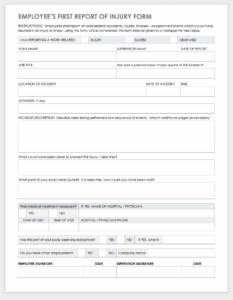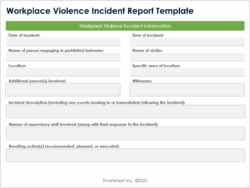In the world of home care, providing compassionate and effective support to individuals in their own homes is paramount. We strive for a safe, comfortable, and nurturing environment, but the reality is that sometimes unexpected things happen. From a minor slip and fall to a medication misunderstanding, incidents can occur despite everyone’s best efforts. When they do, how we respond and document these events is crucial, not just for the client’s immediate well-being but for the overall quality and safety of the care provided.
Proper documentation isn’t merely a bureaucratic chore; it’s a vital tool for accountability, communication, and continuous improvement. It ensures that everyone involved understands what transpired, what actions were taken, and what follow-up might be necessary. Without a clear, standardized way to record incidents, valuable lessons can be lost, and the risk of similar events recurring might remain unaddressed. This is where having a structured approach becomes indispensable, guiding caregivers and agencies through the process effectively.
That’s why a well-designed home care incident report template is more than just a form; it’s an essential component of a robust safety management system. It provides a consistent framework for capturing critical information accurately and thoroughly, transforming potentially stressful situations into opportunities for learning and strengthening care protocols. Let’s explore what makes such a template so important and how it contributes to a safer, more professional home care experience for everyone involved.
Why a Robust Incident Reporting System is Indispensable for Home Care
Having a comprehensive incident reporting system, anchored by a clear home care incident report template, is truly foundational for any reputable home care agency. Its primary role is undeniably about client safety and well-being. When an incident occurs, no matter how small, the immediate priority is to ensure the client is safe and receives any necessary attention. A good template prompts caregivers to record these immediate actions, ensuring nothing is overlooked in the crucial moments following an event.
Beyond immediate safety, a well-implemented reporting system is critical for legal and regulatory compliance. Home care agencies operate within a framework of regulations designed to protect vulnerable individuals. Thorough, accurate incident reports serve as official documentation that an agency is adhering to these standards, taking incidents seriously, and acting responsibly. This kind of documentation can be invaluable in the event of an audit, investigation, or even a legal claim, demonstrating due diligence and a commitment to high standards of care.
But the benefits extend far beyond compliance and immediate response. Incident reports are powerful tools for continuous improvement. Each incident, while unfortunate, offers a learning opportunity. By analyzing trends, identifying root causes, and understanding contributing factors documented in various reports, agencies can pinpoint systemic issues, revise policies, implement new training programs, and ultimately prevent similar incidents from happening again. It’s about transforming reactive responses into proactive strategies that enhance the overall quality of care.
A truly effective home care incident report template acts as a guide, ensuring that all pertinent details are collected systematically. It removes guesswork and provides a standardized format that makes reports easier to complete, review, and analyze. This consistency is vital for comparing data over time and gaining meaningful insights into potential areas for improvement within the agency’s operations and care delivery.
Think of it as building a stronger, safer care environment brick by brick. Each carefully completed incident report is a brick, contributing to a solid foundation of knowledge and best practices. It’s about empowering caregivers with the right tools, fostering a culture of transparency, and continually striving for excellence in every aspect of home care. The right template ensures that no critical piece of information is missed, allowing for a comprehensive understanding of each event.
Key Elements to Look for in a Home Care Incident Report Template
When you’re choosing or designing a home care incident report template, it’s vital to include specific fields that capture all necessary information. Here are some essential components:
- Date, time, and exact location of the incident
- Details of all individuals involved, including the client, caregiver, and any witnesses
- A clear classification of the incident type, such as a fall, medication error, property damage, or behavioral issue
- A detailed, factual description of what happened, how it happened, and any known contributing factors
- A record of immediate actions taken by the caregiver and any interventions applied
- An assessment of the client’s condition immediately after the incident
- A section for required follow-up actions, including notifications to family, supervisor, or emergency services
- The caregiver’s signature and the date the report was completed
- A supervisor’s review section with their signature and date, indicating their assessment and any further directives
Implementing and Utilizing Your Home Care Incident Report Template Effectively
Simply having a well-designed home care incident report template isn’t enough; its true value comes from its effective implementation and consistent utilization within your agency. This means integrating the template seamlessly into your daily operations and ensuring every member of your care team understands its importance and how to use it correctly. Comprehensive training is key, covering not just the mechanics of filling out the form, but also the agency’s philosophy on reporting—emphasizing that reporting is about learning and improving, not about blame.
Once reports are filed, the process of review and analysis takes center stage. Designated supervisors or a quality improvement team should promptly review all submitted reports. This review involves verifying the accuracy of the information, assessing the severity of the incident, and determining if any immediate corrective actions or further investigations are needed. This systematic approach ensures that every incident receives appropriate attention and that potential risks are mitigated quickly, protecting both clients and staff.
The real power of your incident reporting system lies in its ability to generate actionable insights. By regularly analyzing the data collected from your home care incident report template, you can identify patterns, trends, and recurring issues. Perhaps there’s a specific time of day when falls are more frequent, or a particular medication that often leads to errors. This data-driven approach allows you to develop targeted interventions, refine care plans, enhance staff training, and adjust policies to proactively improve safety and quality across your entire service offering. It transforms isolated incidents into valuable intelligence that drives continuous positive change.
Implementing a robust system for incident reporting is a clear demonstration of an agency’s dedication to professional excellence and client welfare. It fosters a culture of safety, transparency, and accountability that resonates through every level of care delivery. When caregivers feel supported in reporting incidents and see their reports leading to positive changes, it builds trust and encourages diligence, knowing their input directly contributes to a safer environment.
Ultimately, a reliable incident reporting process, supported by a thoughtfully designed home care incident report template, is an investment in the peace of mind of clients, their families, and your care team. It’s a commitment to learning, evolving, and always striving to provide the highest possible standard of compassionate and secure home care services. This ongoing dedication ensures that your agency remains a trusted partner in health and well-being, ready to adapt and improve with every lesson learned.




